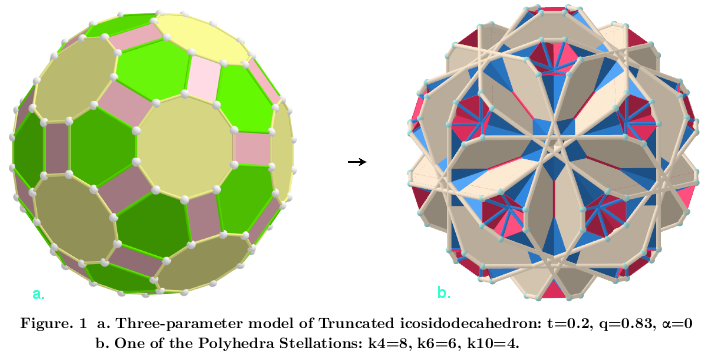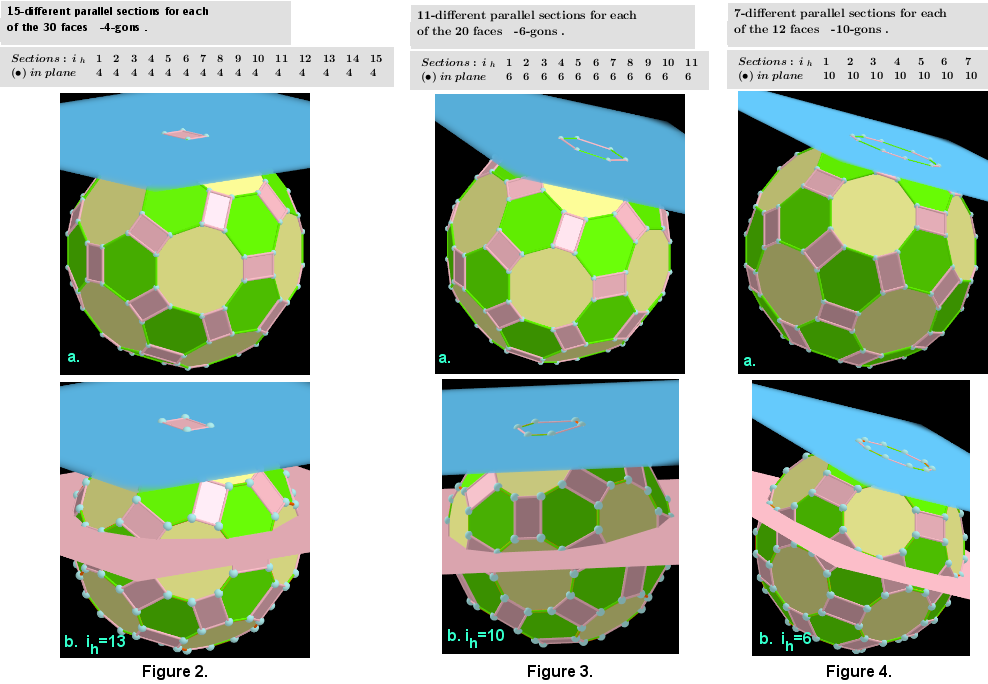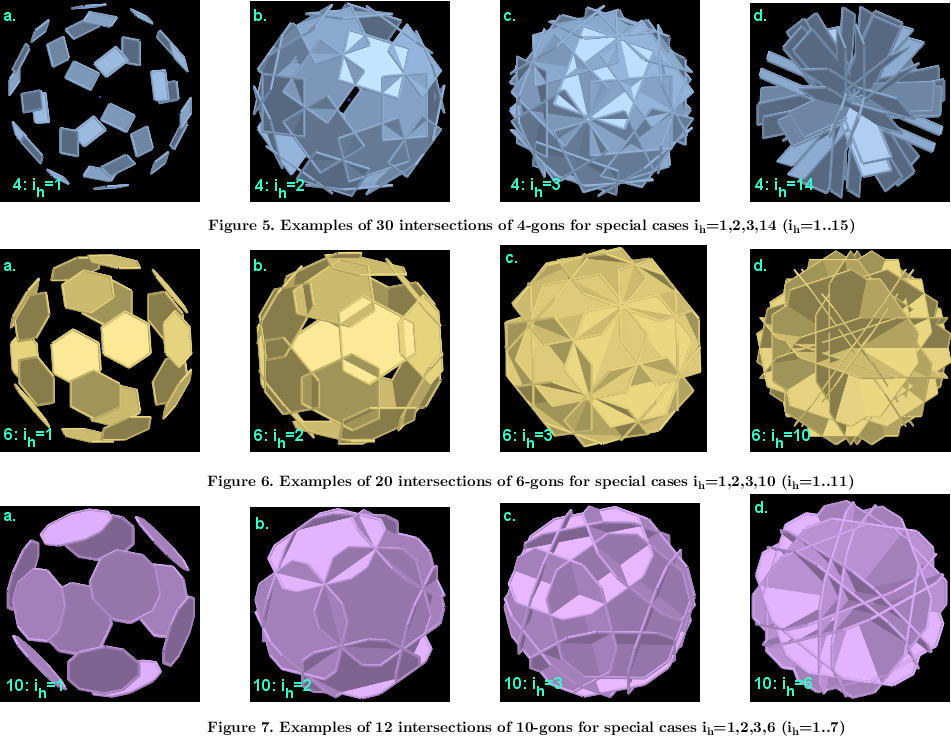2. Method of Creation of stellations using as an example of three-parameter model of an Truncated icosidodecahedron
The process of forming Polyhedra Stellations
The main purpose - is to devise a general algorithm suitable for use in a computer program to obtain shapes of any Polyhedra Stellations.
My method:
In the original convex polyhedron, for each type of face, there are different flat polygons whose planes are parallel to these faces and are at different distances h from the face. i_h -Ordinal numbers of these polygons. The vertices of polygons are the vertices of this original polyhedron.

In example of three-parameter model of an Truncated icosidodecahedronthis Fig.1, we have three types of faces: 30-quadrilaterals (Fig.2a), 20-hexagons (Fig.3a), and 12-decagons (Fig.4a).

For each quadrilateral face, there are -15 (Fig.2b), -11 (Fig.3b) for the hexagon face, and -7 different flat polygons (Fig.4b) for the decagon face.

Intersection of all polygons with the same ordinal number (is shown in Figs.5-7) define their star-shaped structure. For example, the k4 (in Applet) -slider sorts star-shaped structures "generated" by a quadrilateral face. For different parameters t and q, by going through different combinations of sliders (k4,k6,k10) -Fig.1b, you can get different structures. In the applet, I selected 83 cases, among which there are many known structures.
All applets for creation of polyhedra Stellations("Internal"). Truncated icosidodecahedron:
1. Stellations program.
2. Method of Creation of stellations using as an example of three-parameter model of an Truncated icosidodecahedron.
3. Construction of quadrilaterals with vertices symmetric with respect to the centroid of the origin polyhedron.
4. Images. Construction of quadrilaterals with vertices symmetric with respect to the centroid of the origin polyhedron.
5. 92 Stellations with example of model of an Truncated icosidodecahedron.
6. Images of 92 Stellations with example of model of an Truncated icosidodecahedron.